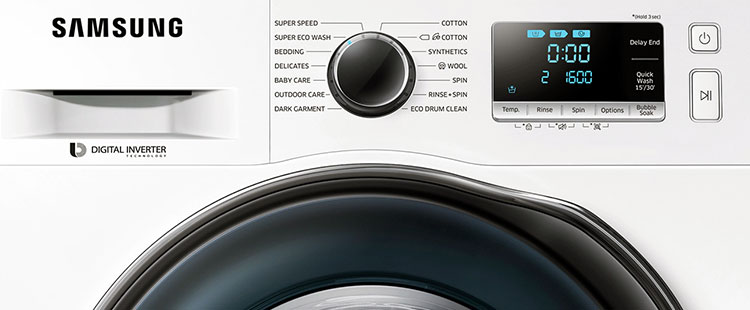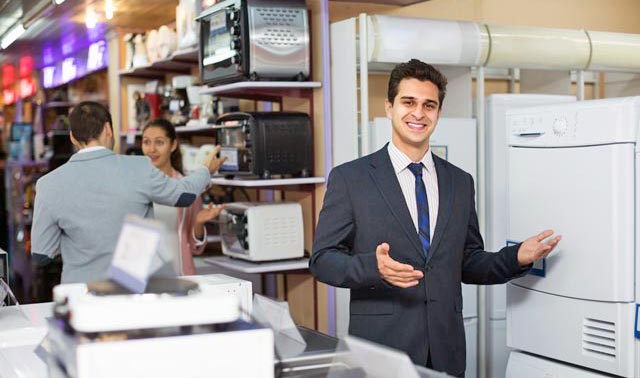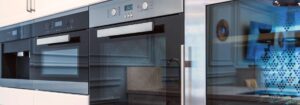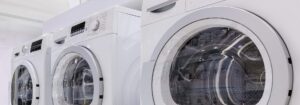Your Samsung washing machine is a powerful device which helps to make your life easier. Being able to wash clothing with speed and precision is always going to be the desired outcome. However, any machine is prone to problems and malfunctions, and Samsung has prepared for this via the use of error codes. To make sure you do not find yourself confused and lost, we’re going to be taking a look at all of the error codes you could see, making sure you’re aware of what problems your machine is facing.

Error Codes 1E, E7 and 1C
These three error codes are all for one purpose, and that’s to inform you that you have a problem with your water level sensor. You can attempt to solve this problem for yourself by waiting 30 seconds while you’ve unplugged your machine from the wall. Then, switch the system on and check to see if there’s any change. If there isn’t, then you can start to think about contacting a professional.
Error Codes 3E, 3E1, 3E2, 3E3, 3E4, BE and 3C
What you will come to notice with Samsung models is that they group their codes for the sake of simplicity. All of these codes refer to an issue with the motor, and so you’ll need to attempt the 30-second switch off and restart technique. If this does not work, you’ll need to contact us.
Error Codes 4E/E1/4C
These error codes all point to an issue with the water supply. Now as you can probably imagine, this can be a big deal, so it’s important to make sure that you are doing all of the needed checks to protect your system from further damage. First of all, you’re going to need to make sure that you are checking the water taps, looking to see if they’re open and unclogged. You can also do things like taking a look at the water hoses, and make sure they’re free from blockages, and that the taps are also not frozen. These are some of the most common problems which you’ll encounter, and so it’s crucial to either check for yourself or to get a professional to help you.
Error Codes 4E1, 4E2, 4Ed, H1, HE, 4C2, HC,CE, and E8
These error codes point to a problem with your water temperature. You’ll need to make sure that you put this right quickly because otherwise, you might find yourself in hot water!
Puns aside though, this can be a pretty significant issue, and you need to make sure that you’re putting it right whenever you can. You need to check that everything is connected correctly and that you’re looking after the machine.
Error Codes 5E, E2, 5C
These error codes are all connected to the drains, and you’ll know fairly quickly if there’s a problem with the drainage system because a lot of things won’t be right.
Thankfully, there’s a couple of different things that you can do to make sure that you are checking your draining and working to make sure that it’s performing at the correct levels. You can clean out the pump drainage filter, and also check the hose and water connection to make sure that you avoid blockages. Naturally, it can be challenging to do some of these things, like for example checking whether the drain hose is frozen or not and defrosting it if it is, but these are all things which will help you to get the most from your system. However, if you find that you’re struggling with this kind of task, then you’re more than welcome to bring your problem to us, and we’ll help to put it right!
Error Code 8E
Fault code 8E is a problem with the current, and so you’ll need to make sure that you’re exceptionally careful even if you’re making inspections around the back of your machine. What you’re going to need to do is switch off the washing machine, unplug it, and then wait for 30 seconds before turning it back on. In a lot of situations, this resolves all problems, but if not then you know where to find us.
Error Code 8C
This error code refers to a lesser-known fault, which is an issue with the MEMS sensor. To try and fix this, you’re going to need to reset the system again, so unplug, wait 30 seconds, and replug. If this doesn’t do it, you might want to consider professional assistance.
Error Codes 9E1, PH1, 9E2, PLO, AE
If these error codes are flashing up on your system, you’re going to need to stop and fix this, because it tells you that there’s no power and the system is not switching on. Usually, you can resolve this with the reset trick, but in some cases, you’ll need to do some more investigations to get to the bottom of things. For example, you should make sure that you’re not using an extension lead, as well as trying to identify if the problem is contained within the plug itself. Finally, you may want to consider that the washer has blown a fuse, and there’s nothing you can do.
Error Codes AC6, AE, 13E, AC
These codes will suggest that there is a signal communication error, and it can sometimes be resolved by doing absolutely nothing. In a lot of cases, you’ll find that everything returns to normal thanks to the internal processes of the system. However, if that’s not the case, you’ll need to turn the machine off and restart the cycle.
Error Codes bE1, 12E, bE2, 14E, bE3, 18E
These error codes point to problems with the button sticking, so you’ll need to make sure that they are clean and free of sticking. This is not something you will require assistance for, because the buttons have become merely jammed and can be remedied with care and attention.
All The Rest
There’s a lot of other codes to cover, and we don’t want to bore anyone, so we’ll do a quick recap of everything you might see. DDC and ddc are what you’ll see when you open the door without pausing the system, and dE, dE1, Ed, dC, DC1 and DC are all to inform you about a problem with the door in general.
Code dE2 is to do with the on/off switch, FE is the fan, and HE2, HE2 are heater dryer codes. HE3 is the steam function code, and HOT means that, well the washing machine is too hot. Not a fault, but more of a notification.
LE, LE1, E9, 11E, LC, LC1 are all codes which notify you about a low water level, OE, OF, E3, OC means that there’s an overflow, and t1, t2, tSt means that it’s in test mode. The Sud code shows you that there are too many suds in the machine, and tE, EC, tE1, tE2, tE3 all point to a problem with the temperature sensor. UC means that there’s a variation in the supply voltage, and UE, E4, Ub all mean that the drum is unbalanced in terms of weight.
Remember that at Just Fixed, we can help with all these problems, but we like to know what we’re dealing with, so let us know!




